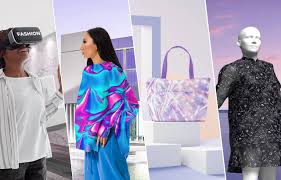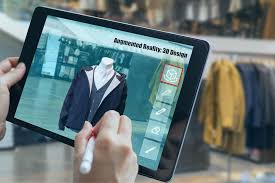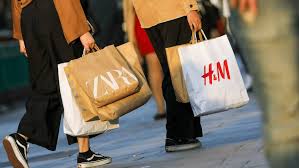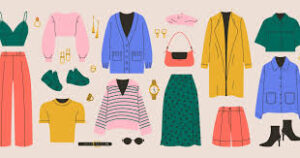Fashion Retail Trends: Navigating the Future of Style and Shopping
The fashion retail landscape is experiencing a significant transformation, influenced by shifting consumer preferences, technological advancements, and broader societal changes. As we delve into the 2020s, understanding key trends in fashion retail is essential for brands and retailers aiming to thrive in a competitive market. This comprehensive overview explores the latest fashion retail trends, their implications, and strategies for businesses to adapt effectively.
- E-Commerce Expansion
The Shift to Online Shopping
The COVID-19 pandemic has accelerated the shift towards online shopping, fundamentally altering consumer behavior. With physical stores closing or operating at reduced capacity, consumers have turned to e-commerce as their primary shopping channel. According to industry reports, online fashion sales have surged, leading to a dramatic increase in e-commerce revenue for many retailers.
Omnichannel Retailing
As consumers navigate between online and offline shopping, retailers are adopting omnichannel strategies that create a seamless shopping experience. This approach integrates various sales channels, enabling customers to shop online, in-store, or through mobile devices effortlessly. Key components of successful omnichannel strategies include:
- Click-and-Collect Services: This service allows customers to order online and pick up their purchases in-store, merging the convenience of online shopping with the immediacy of brick-and-mortar retail.
- Unified Inventory Management: By maintaining a single inventory system across channels, retailers can ensure that products are available for purchase no matter where the customer shops.
- Personalization and Customization
The Demand for Tailored Experiences
Today’s consumers increasingly seek personalized shopping experiences that cater to their individual preferences. Personalization goes beyond product recommendations; it encompasses every aspect of the shopping journey.
- Data-Driven Insights: Retailers are leveraging data analytics to understand customer behavior and preferences better. By analyzing past purchases and browsing history, brands can deliver tailored marketing messages and product suggestions.
- Customizable Products: Many brands are offering customizable options, allowing customers to choose colors, materials, and styles. This not only enhances the shopping experience but also fosters a deeper emotional connection with the brand.
Virtual Fitting Rooms
The rise of augmented reality (AR) technology has led to the development of virtual fitting rooms, enabling customers to “try on” clothes online. This innovation helps reduce the uncertainty associated with online shopping, potentially lowering return rates while enhancing customer satisfaction.
- Sustainability and Ethical Fashion
A Growing Consciousness
Sustainability has emerged as a crucial factor influencing consumer purchasing decisions. Shoppers are increasingly aware of the environmental impact of fashion, leading them to seek brands that prioritize ethical and sustainable practices.
- Sustainable Materials: Brands are increasingly incorporating eco-friendly materials, such as organic cotton, recycled fabrics, and innovative textiles, into their collections. This shift not only appeals to environmentally conscious consumers but also helps brands differentiate themselves in a crowded market.
- Transparency and Traceability: Consumers are demanding greater transparency regarding sourcing and manufacturing processes. Brands that provide clear information about their supply chains and production practices can build trust and loyalty with their customers.
Circular Fashion
The concept of circular fashion is gaining traction as brands explore ways to reduce waste and promote recycling. Initiatives such as clothing rental services, resale platforms, and take-back programs encourage consumers to extend the lifecycle of their garments, aligning with the growing demand for sustainable practices.
- Direct-to-Consumer (DTC) Models
Bypassing Traditional Retail
The DTC model allows brands to sell directly to consumers, eliminating intermediaries and enabling greater control over pricing, branding, and customer relationships. This approach has gained popularity as it fosters a more personalized shopping experience.
- Enhanced Brand Loyalty: DTC brands often prioritize storytelling and community engagement, cultivating strong emotional connections with consumers. By creating brand narratives that resonate with their audience, these brands can foster loyalty and encourage repeat purchases.
- Lower Prices for Consumers: By cutting out middlemen, DTC brands can offer competitive prices, making high-quality products more accessible to a broader audience.
- Social Commerce
The Intersection of Social Media and Shopping
Social media platforms are increasingly becoming vital sales channels, transforming how consumers discover and purchase fashion. Features like Instagram Shopping and Facebook Marketplace enable brands to sell products directly through their social profiles, creating a seamless shopping experience.
- Influencer Marketing: Collaborations with influencers remain a powerful strategy for fashion brands. Influencers can showcase products in authentic contexts, reaching wider audiences and driving sales. This form of marketing leverages trust and relatability, significantly impacting consumer decisions.
- User-Generated Content: Brands are encouraging customers to share their experiences on social media, effectively turning satisfied customers into brand ambassadors. User-generated content can enhance brand visibility and authenticity.
- Technology Integration
Embracing Innovation
Technology is at the forefront of the fashion retail evolution, enabling brands to enhance the shopping experience and streamline operations.
- Artificial Intelligence (AI): AI is being utilized for various applications, including personalized recommendations, inventory management, and trend forecasting. Retailers can analyze consumer data to predict future trends and optimize product offerings.
- Augmented Reality (AR) and Virtual Reality (VR): Retailers are increasingly incorporating AR and VR technologies to create immersive shopping experiences. Virtual showrooms, 3D product displays, and AR fitting rooms allow customers to engage with products in innovative ways.
Mobile Shopping
The rise of mobile commerce (m-commerce) reflects the growing trend of consumers shopping via smartphones and tablets. Brands are optimizing their websites and apps for mobile devices, ensuring that the shopping experience is convenient and user-friendly.
- Inclusivity and Diversity
Representation in Fashion
Consumers are calling for greater inclusivity and diversity within the fashion industry. Brands that prioritize representation—through diverse models, inclusive sizing, and culturally sensitive marketing—are better positioned to connect with a broader audience.
- Size Diversity: The demand for extended size ranges has prompted brands to reevaluate their offerings, ensuring that clothing is available for a wider array of body types. This shift not only meets consumer demand but also fosters positive brand perception.
- Cultural Representation: Fashion brands are increasingly collaborating with designers and influencers from diverse backgrounds, showcasing a variety of cultural influences in their collections.
- Subscription Models and Rental Services
The Emergence of New Business Models
Subscription services and rental platforms are reshaping how consumers engage with fashion. These models offer convenience and affordability while aligning with the sustainability movement.
- Clothing Rental Services: Many consumers are turning to rental services for special occasions, allowing them to wear high-end fashion without the commitment of purchase. Brands like Rent the Runway have successfully tapped into this market.
- Subscription Boxes: Curated subscription boxes provide personalized selections of clothing and accessories based on individual preferences. This model caters to consumers seeking variety and novelty in their wardrobes.
- Enhanced In-Store Experiences
The Role of Physical Retail
Despite the rise of e-commerce, brick-and-mortar stores remain essential in the fashion retail landscape. However, retailers are reimagining the in-store experience to attract and engage customers.
- Experiential Retail: Retailers are creating immersive shopping environments that go beyond traditional retail. This can include interactive displays, workshops, and events that encourage community engagement and foster emotional connections with the brand.
- Technology Integration in Stores: Smart mirrors, mobile payment systems, and interactive kiosks are enhancing the in-store experience, providing customers with convenient and engaging ways to shop.
- Globalization and Localization
Navigating Diverse Markets
As fashion retailers expand globally, understanding local markets becomes crucial. Successful brands tailor their strategies to resonate with specific cultural and regional preferences.
- Localized Offerings: Brands that adapt their product lines and marketing strategies to reflect local tastes and trends can build stronger connections with consumers. This might involve collaborating with local designers or incorporating culturally relevant elements into collections.
- Global Supply Chains: Brands are also navigating the complexities of global supply chains, balancing efficiency with the need for ethical practices and sustainability.
Conclusion
The fashion retail landscape is evolving rapidly, driven by technological advancements, changing consumer expectations, and a growing emphasis on sustainability and inclusivity. Brands that embrace these trends and adapt their strategies accordingly will be well-positioned to thrive in this dynamic environment.
As we move forward, the integration of technology, a commitment to ethical practices, and a focus on personalized consumer experiences will be crucial for success in the fashion retail industry. By staying attuned to these trends, retailers can create meaningful connections with their customers, foster brand loyalty, and drive sustainable growth in the years to come.
In this ever-changing landscape, fashion retail is not just about selling clothes; it’s about creating experiences, building communities, and responding to the values and desires of a diverse global audience.

